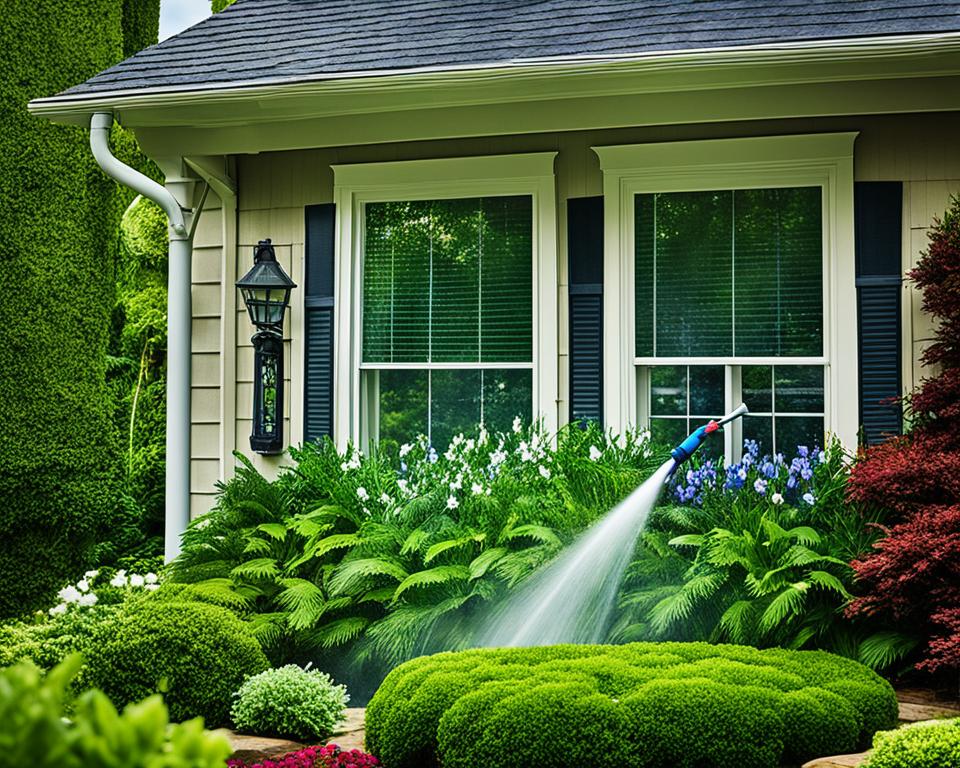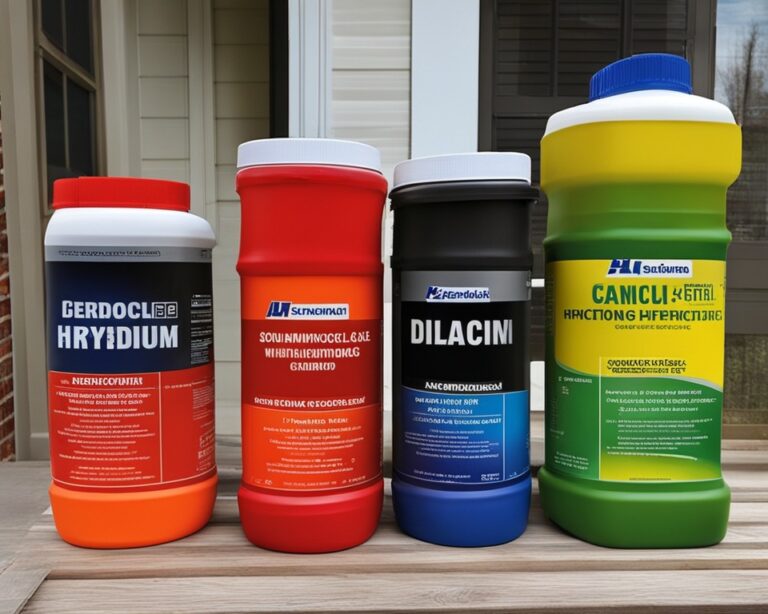What Is Softwashing?
Are you looking to clean your home or business outside? You might have heard about “softwashing.” But what is it, and how does it compare to traditional pressure washing? We’ll dive into the details of this soft yet powerful cleaning method.
Softwashing is a gentle cleaning method. It uses low-pressure water and a special solution to clean building exteriors safely and well. Unlike harsh pressure washing, softwashing is kinder to delicate surfaces. It removes organic stains, mold, mildew, and other tiny organisms without damage.
Softwashing stands out because it’s low on chemicals. It mixes about 1% Sodium Hypochlorite (bleach) with 2 ounces of surfactant in 5 gallons of water. The surfactant works to break down dirt and stains by getting into the siding’s grooves. This gentle, low-chemical method is perfect for many surfaces, like roofs, siding, windows, and stonework.
Understanding Soft Washing: A Gentle Cleaning Approach
What Is Soft Washing?
Soft washing is a gentle way to clean the outside of buildings. It uses low-pressure water and a special cleaning solution. This method is kind to delicate materials and works like a regular garden hose.
The cleaning mix has bleach, surfactants, and water. It fights mold, mildew, algae, and other dirt at their roots. The low-pressure water lets the solution work well without hurting the surface.
Soft washing is great for surfaces that can be easily damaged. This includes stucco, vinyl siding, wood, and painted areas. It cleans these surfaces well without causing harm. Plus, it’s good for the environment.
How Soft Washing Differs from Pressure Washing
Exterior cleaning comes in two main types: soft washing and pressure washing. Both aim to remove dirt and grime. But they use different methods. Knowing the differences helps you pick the right one for your needs.
Pressure washing blasts away dirt with high-pressure water. It’s great for hard surfaces like driveways and decks. But, it can damage softer surfaces like siding and windows if not careful.
Soft washing uses a low-pressure cleaning solution to remove mold and algae. It’s safe for delicate surfaces like vinyl and wood. This method is gentler, using about 10 gallons of water per minute at 400 PSI, much less than high-pressure washers.
Soft washing and pressure washing differ in their approach and the surfaces they clean. Pressure washing is best for tough jobs, while soft washing is for delicate surfaces. Knowing these differences helps you choose the right cleaning method for your needs.
Softwashing: The Ideal Solution for Fragile Surfaces
Soft washing is great for cleaning delicate parts of your home’s exterior. It’s perfect for surfaces like roof shingles, windows, glass doors, and more. These surfaces can get damaged by high-pressure washing. But soft washing uses low pressure, so it cleans effectively without harm.
Surfaces Suitable for Soft Washing
Soft washing is perfect for many fragile surfaces. It cleans roof shingles, windows, and more without damage. The gentle cleaning solutions and low pressure keep these surfaces safe while cleaning them well.
Soft washing can reach up to 50 feet high, cleaning hard-to-get areas safely. It’s safer and more efficient than traditional washing. Plus, it uses eco-friendly cleaners that remove mold, mildew, and dirt without harming the environment.
The Benefits of Choosing Soft Washing
Soft washing is a great way to keep your property’s exterior looking good. It uses a low-pressure water system to clean off dirt, mold, mildew, algae, and stains from roofs, sidings, decks, and driveways. This gentle method removes the root cause of discoloration and protects delicate surfaces from damage.
Soft washing is good for the planet. It uses biodegradable chemicals that break down into harmless stuff. Plus, it uses less water than pressure washing, making it a green choice.
It also makes your home healthier by getting rid of harmful germs like bacteria and viruses. This boosts your home’s look and value. Plus, regular soft washing helps your exterior surfaces last longer and cuts down on repair costs.
Soft washing is cheaper and safer than pressure washing. It works well on many materials like shingles, wood, vinyl, and stucco. For the best results, it’s smart to hire a pro soft washing service. They have the right skills and gear for a thorough, safe, and effective clean.
The Softwashing Process: A Step-by-Step Guide
Keeping your home’s exterior looking great is easy with soft washing. We start by getting everything ready. This means covering electrical boxes, locks, key pads, and electronic doorbells. We also move outdoor furniture, decorations, or plants out of the way.
Next, we spray the soft washing solution on. This mix has a 1% sodium hypochlorite (bleach) and a surfactant. We use a low-pressure sprayer. The solution sits for 5-10 minutes to kill mold, mildew, and algae.
Finally, we rinse everything from top to bottom with low-pressure water. This washes away the cleaning solution and any debris. By doing it this way, we ensure your home looks great and stays in top shape.



